| Test image 1 | No radiosity |
| This image is a very simple one. As you can see, the radiosity adds shading to the objects that are in the shadows and the "color bleeding" which is important for realism. With recursion level 2 the coloration is better. Note also the shadow under the brown jar. In a perfect world the recursion level would be almost infinite, but for technical reasons (ie. trace time) I used only up to level 2. The image with recursion 2 took about 1 hour to render in a P-II 350MHz. |
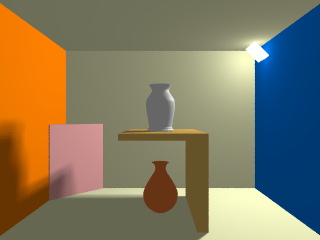 |
| Radiosity recursion level 1 | Radiosity recursion level 2 |
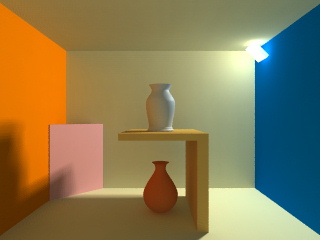 |
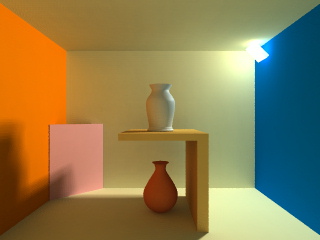 |
| Test image 2 | No radiosity |
| This image is a little more complex and tries to be a little more like a real scene. Again we see that radiosity is essential to shade properly the objects in the shadows (note specially the yellow sphere). And again the second recursion approximates more accurately the diffuse interreflection of the light. | 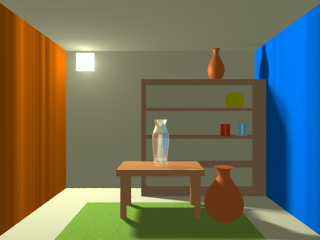 |
| Radiosity recursion level 1 | Radiosity recursion level 2 |
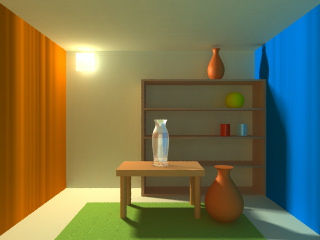 |
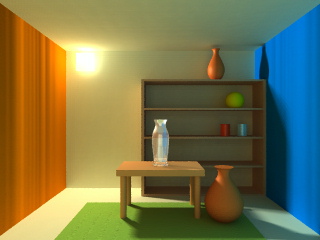 |
| Test image 3 | No radiosity |
| This image shows the effects of indirect lighting. The only light source in the scene is a spot light (indicated with the black cylinder) pointing at the white circular object. As you can see in the non-radiosity image, nothing is directly illuminated (except the white circular object). In this image we can easyly see the importance of the recursion level. Note also how radiosity calculations create very realistic shadows. |
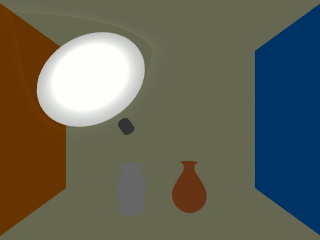 |
| Radiosity recursion level 1 | Radiosity recursion level 2 |
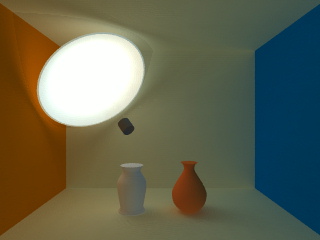 |
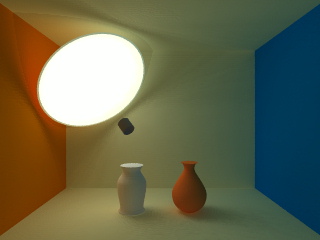 |